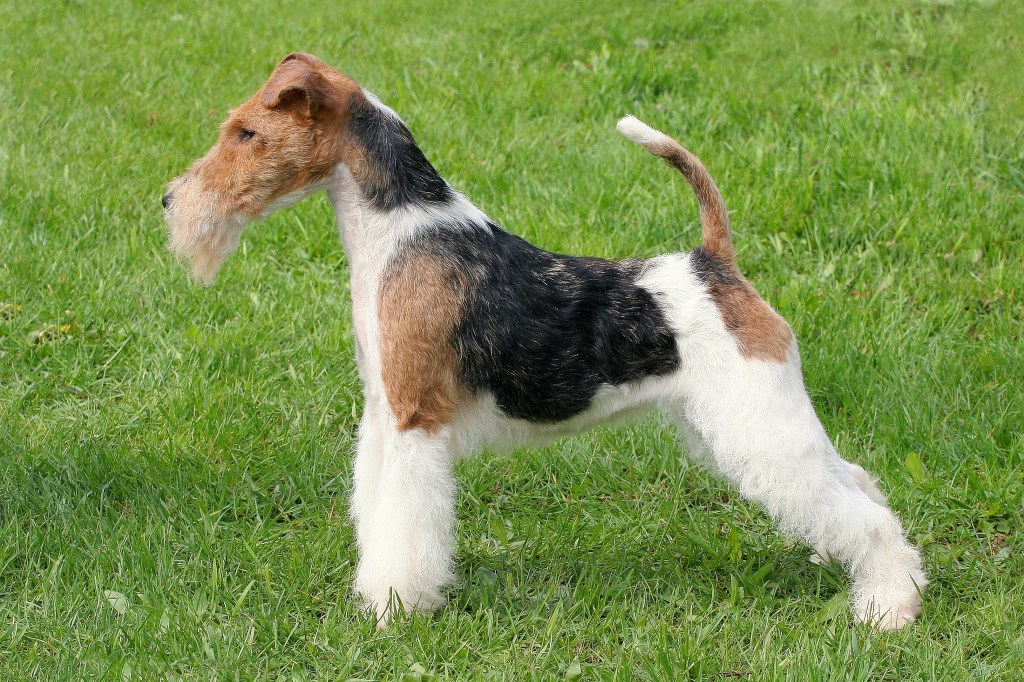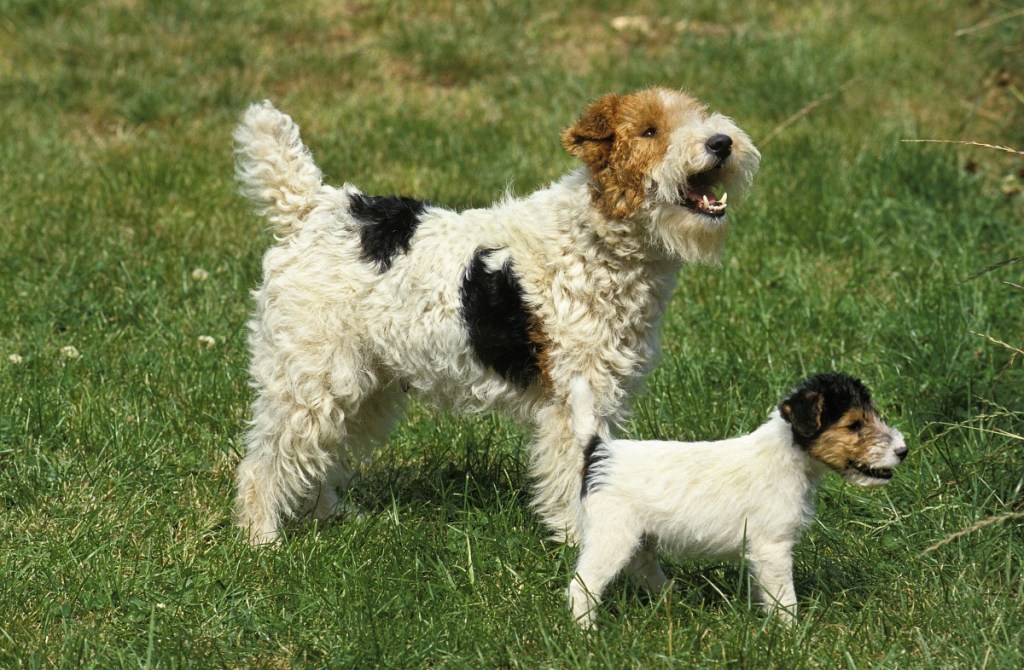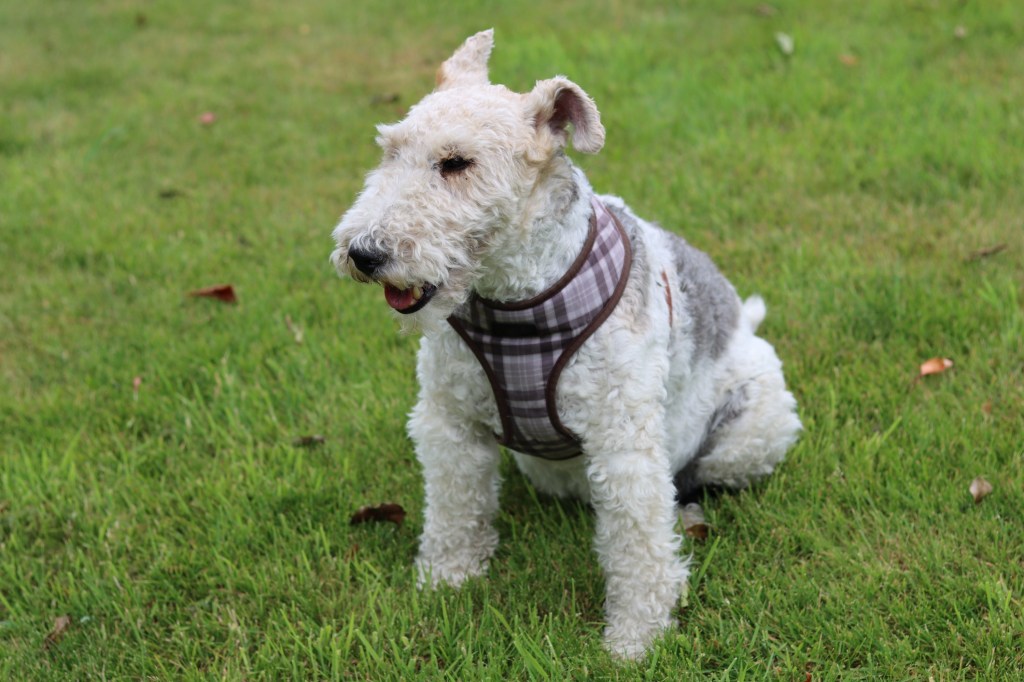Introduction to Wire Fox Terriers
Known for being confident, intelligent, and expressive, the wire fox terrier could be a wonderful household companion for energetic people. This friendly dog has the characteristic independence of a terrier and can be athletic, amusing, and low-shedding.
However, wire fox terriers can be difficult to coach and are susceptible to certain health conditions which may be covered by pet medical insurance. Wire fox terriers make wonderful companions, but is that this one of the best dog breed in your lifestyle and family?
To learn more about this breed, read Healthy Paws’ guide to wire fox terriers.
Protect your pet
Pet insurance may also help cover the prices of veterinary look after future illnesses and injuries. Plus, you may visit any licensed vet with a plan from Healthy Paws.
Get Your Quote
Size of Wire Fox Terriers
A completely grown adult male wire fox terrier often weighs about 18 kilos, and an adult female weighs between 15 and 17 kilos. Males and females stand not more than 15.5 inches tall.
Here’s how big you may expect your wire fox terrier to get because the dog grows from puppyhood to maturity:
| Average Weight Chart | 6 months | 12 months | 18 months |
| Male wire fox terriers | 11-13 lbs. | 16-18 lbs. | 17-19 lbs. |
| Female wire fox terriers | Sep 11 lbs. | 14-16 lbs. | 15-17 lbs. |
Characteristics of Wire Fox Terriers
Wire fox terriers are full of life dogs which are highly trainable and may excel at various dog sports and activities. They make lovely show dogs but require regular exercise and mental stimulation to remain healthy and comfortable. Wire fox terriers are natural athletes and will be little comedians, too. There’s never a dull moment within the household if you end up living with a wire fox terrier!
They only have moderate care, health, and grooming needs and are inclined to do thoroughly around kids. As you get to know a wire fox terrier’s personality, here’s what you may expect based on the breed characteristics:
| Breed Characteristic | Level (High, Medium, Low) |
| Affectionate with People | High |
| Good with Kids | High |
| Good with Pets | Medium |
| Need for Exercise | High |
| Energy Level | High |
| Intelligence Level | High |
| Able to Be Trained | High |
| Amount of Barking | High |
| Amount of Shedding | Low |

History of Wire Fox Terriers
The history of the wire fox terrier dates back to the late 1700s when British fox hunts were wildly popular. These dogs were tasked with getting foxes out of their hiding places in order that hounds and hunters could pursue them within the open countryside. They were essential on hunting expeditions and helped their owners achieve success in tracking down game. Historians say that the breed descended from the rough-coated black and tan terrier that was used for hunting foxes.
The American Kennel Club recognized the breed in 1885. However, the club didn’t recognize the wire fox terrier and the graceful fox terrier as separate breeds until the late nineteenth century.
King Edward VII had a wire fox terrier named Caesar. In 1920, RCA used a photograph of a smooth fox terrier in its logo. The breed has been featured in movies and on TV, starting with a famous pup starring within the “Thin Man” movies within the Thirties and Forties.
Wire fox terriers have consistently been popular show dogs and have won many awards for his or her skills and appearance. However, they’re still considered to be an unusual breed and are rarer as household pets than many other kinds of dogs.
Wire Fox Terrier Standard Information
The official standard of the wire fox terrier describes the breed as alert, quick, and keen-eyed. Given their size, these dogs have great speed and endurance and may cover a variety of ground.
Here is an summary of the breed standard information for wire fox terriers:
Head:
- 7 to 7 ¼ inches from the back of the occipital bone to the nostrils
- Keen expression
- Dark eyes which are moderately small and deep-set
- Small and V-shaped ears of moderate thickness
- Skull is nearly flat and slopes barely and regularly
- Nose is black
Neck, Topline, Body:
- Neck is muscular and free from throatiness
- Back is brief and level with no slackness
- Tail is ready on high and carried gaily
Forequarters:
- Shoulders slope steeply downwards when viewed from the front
- They appear long and well laid back when viewed from the side
- Elbows are perpendicular to the body
- Feet are round and compact
Hindquarters:
- Hindquarters are strong and muscular
- Hock joints are well bent and near the bottom
- Feet are similar to within the front
Coat:
- Appears to be broken with hairs which are dense and tend to twist
- Wiry texture, like coconut matting
- Hardest coats are crinkly and barely waved
- ¾ to 1-inch length on the shoulders and neck
- 1 ½ inches on the back, ribs, withers, and quarters
Color:
- Predominantly white
- Brindle, red, liver and slaty blue are objectionable
Gait:
- Legs carried clear-cut while traveling
- Hind legs propel the ability

Caring for Wire Fox Terriers
Wire fox terriers are adventurous dogs that enjoy being out and about with their members of the family. They also are inclined to view everyone as a possible friend. They will be headstrong but are good at solving problems and love having a job to do. Active families love wire fox terriers, especially ones with older children who understand the right way to handle dogs.
Here are some general suggestions for taking one of the best care of a wire fox terrier:
Best Living Environments:
- Homes with fenced yards
- Can live in an apartment with adequate exercise
- Fine in households with other dogs, especially when introduced early in life
- Not one of the best with cats as a result of the strong prey drive
Type of Exercise:
- 45 minutes of exercise every day
- Walks, hikes, and runs
- Playtime in a yard or dog park
Mental Enrichment:
- Puzzle toys
- Agility training and dog sports
- Plenty of time with members of the family
- Keep stimulated to stop digging and chewing behaviors
Training Strategies:
- Can be stubborn and independent
- Be consistent and patient with training
- Prioritize leash training
- Consider crate training if you are away
Grooming Tips:
- Hand-stripping or trimming to stop hair from getting too long
- Brush no less than weekly to stop matting
- Only bathe when the dog is dirty
- Use high-quality shampoo for baths that doesn’t eliminate natural oils
- Clip nails as needed
- Check ears for wax buildup
- Brush teeth every day
Common Health Problems of Wire Fox Terriers
The average life expectancy of a wire fox terrier is 12 to fifteen years. The breed is mostly quite healthy. However, as a result of their breeding and genetics, some wire fox terriers are at higher than average risk for certain diseases.
These are a few of the most typical health issues that arise with wire fox terriers:
- Patellar luxation
- Heart problems
- Cataracts
- Lens luxation
- Legg-Perthes disease (hip joint condition)
- Deafness
- Van den Ende-Gupta syndrome

Diet and Nutrition for Wire Fox Terriers
Most adult wire fox terriers will thrive when eating high-quality, nutritionally complete and balanced pet food. Puppies should eat puppy food until they’re 10-12 months old. If you feed your wire fox terrier homemade pet food, be sure you’re working from a recipe that’s designed by a veterinary nutritionist and appropriate in your dog’s age and health status.
Feed the quantity of pet food needed to maintain your pet slim. You should have the ability to see your wire fox terrier’s waist and feel (but not see) their ribs without having to press too hard. In general, puppies need more calories per day than adults, but a dog’s needs will vary together with his or her activity level and other aspects. Canine obesity is a difficulty in lots of households and may actually shorten the lifespan of an otherwise healthy wire fox terrier.
Don’t leave food out all day for a wire fox terrier to graze on. Divide the whole amount of food for the day into no less than two meals for adults and three to 4 meals for puppies. Place the food out in a bowl at roughly the identical time of the morning and evening every day.
Talk to your veterinarian if you’ve got any questions on your wire fox terrier’s weight loss plan or health.
Where to Adopt or Purchase Wire Fox Terriers
The American Fox Terrier Club is the national breed club for wire fox terriers. It provides details about wire fox terriers and smooth fox terriers and a breeder directory. You may contact rescue organizations, comparable to the American Fox Terrier Rescue and Wire Fox Terrier Midwest, to adopt a wire fox terrier in need of a loving home.
If you’re on the lookout for a latest dog in your life, other similarly sized breeds share common characteristics with the wire fox terrier, including these:
- Smooth fox terrier
- Lakeland terrier
- Parson Russell terrier
- Rat terrier
- Russell terrier
Pet Insurance for Wire Fox Terriers
Pet insurance is a wonderful idea to maintain up along with your energetic wire fox terrier and be prepared for whatever your pup might get into. Healthy Paws offers wire fox terrier pet insurance that allows you to use any licensed veterinarian you trust and has no costly add-ons. With one easy-to-understand policy with flexible deductible and premium options, our insurance for wire fox terriers covers latest accidents and injuries, hereditary conditions, cancer, emergency care, and alternative care.
You’ll have peace of mind knowing that you may all the time get your wire fox terrier the treatment it needs without having to fret in regards to the high cost of vet bills. To learn more about pet insurance and its price, please request your quote on our website today.